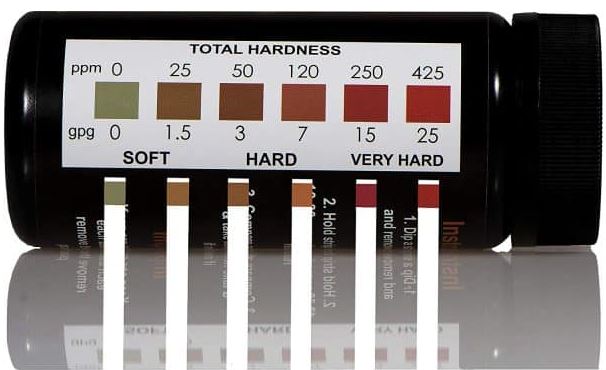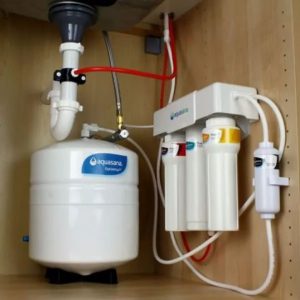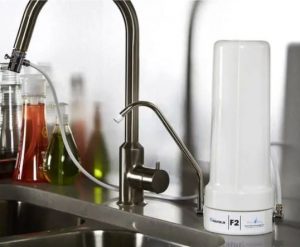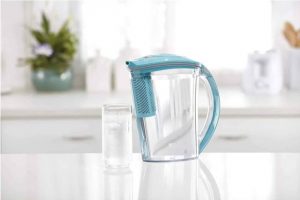Water Quality Test
Here are five simple ways how to test the water quality at home.
Smell, Taste, Colour

Smell, taste, and visuals are the quickest ways to test the quality of the water at home. However, this method is capable of testing a few types of contaminants such as chlorine, hard water, irons, and sediments.
Chlorinated water is easy to detect with its distinctive smell as if you are in the swimming pool. In addition, chlorinated water will cause dehydration in our throats when it is consumed.
Observe the color of your water with transparent glass. The presence of iron and sediments such as rust and dust can be clearly seen in the glass.
Total Dissolved Solid (TDS)

TDS indicates the number of dissolved solids in tap water. It is a great indication of how many minerals there are in the water but does not differentiate whether it is good or bad minerals.
Generally, TDS is used to measure the water generated by reverse osmosis system making sure that it is close to 0. This is a general expectation as this type of filter removes all minerals and contaminants.
Alkaline water contains minerals such as calcium and magnesium. Hence, TDS is not suitable to be used as a water quality measurement in this case.
An excellent TDS checker device just priced for less than $20. The device can be used multiple times to keep track of the quality of the filtered water from the reverse osmosis machine.
Consumer Confidence Report
*Consumer Confidence Report (CCR) is exclusive for residents from the US.
CCR is a comprehensive report also known as the annual drinking water quality report which has all the details, and contaminants found in your water source. This report is released on July 1st of every year by the individual water supplier.

Through this report, every household will know what is the condition of the tap water. It might not accurate as the contaminants might be picked up as water flows to each household.
Internal pipes in households often contribute to contaminants such as lead or iron, especially on aged apartments and houses.
Drinking Water Test Strips or Test Kits
Test strips and test kits transform your home into a mini water quality test laboratory. Some of the common chlorine, lead, fluoride, hardness, pH, nitrates and bacteria (only for test kits).
Test strips are one of the convenient ways to check the presence of contaminants in tap water at home. The result will be available within seconds.

The current test strips are created to perform a test on multiple contaminants within a single strip. It can include up to 15 checks in a single strip.
Test kits however will have a more comprehensive and detailed check on individual contaminants which includes bacteria and pesticides. Each contaminant will have its unique way to test, and the results are more accurate as compared to test strips.
The results will be visible within minutes and can be used only once. Despite the disadvantages, many opted for the test kit due to the accuracy of the check.
Check out our best home water test kits.
Water Quality Laboratory
A water quality laboratory is the most accurate method to test the water specifically the tap water in your home. The laboratory is equipped with state-of-the-art machines which are capable of providing accurate results in terms of parts per million (ppm).
Most laboratories will provide a comprehensive test report with detail of more than 100 water contaminants which will help you to choose which drinking water filter to purchase.

However, the cost of a laboratory test will cost a lot more as compared to the few methods that were mentioned above.
When Should You Test Your Water Quality?
How often should a water quality test be conducted? It is advisable to test the water quality once every year, especially on a private well water source.
Well water source is susceptible to heavy contaminations as it is from groundwater which is not treated by municipal. Any virus or bacteria can develop and spread quickly within days.
For municipal water, there are certain rules and regulations to ensure the safety of the source water before being channelled to every household. Hence, it is safer, and the contaminants will not vary a lot.
Which Drinking Water Filter To Choose?
In HouseHoldMag, we classified all water filters into 11 types. Among them, 4 of them are focusing on a household filtration system.
Depending on the water quality test result and your available budget, you can select some of the following water filters that suit your household.
Complete Coverage: Under Sink Water Filter
As defined by its name, this type of filter is often hidden from public view as it is installed under the sink. The under sink water filters are normally packed with great filtration technologies such as reverse osmosis membrane that removes 99% of contaminants.

Suitability: It is suitable for house owners on any water source.
Compact and Comprehensive: Countertop Water Filter
Traditional countertop water filters consist of one canister filter which is installed near the faucet of the sink. The filter is compressed with different filtration media to remove various contaminants.

Suitability: It is suitable for tenants and house owners on the city water source.
Portability: Water Pitcher
Water pitchers are the preferred options for students due to their portability and affordability. Most pitchers have limited filtration capability that only removes chlorine and sediments with some exceptions such as the Aquagear Pitcher.
Suitability: It is suitable for city water sources only.

Budget: Faucet Water Filter
Faucet water filters are considered budget picks for drinking water filters. They are small faucet adapters packed with filtration media. Similarly to water pitchers, their capabilities are limited in filtering chlorine and sediments.
Suitability: It is suitable for city water sources only.

Get Your Tap Water Tested Today!
Water safety is getting worst as compared to decades ago. It is no longer safe to drink water directly from the tap in many places. Many of the contaminants are odorless and colorless which can’t be seen by our eye.
Conduct a water quality test today to keep you and your family free from water contaminants.
